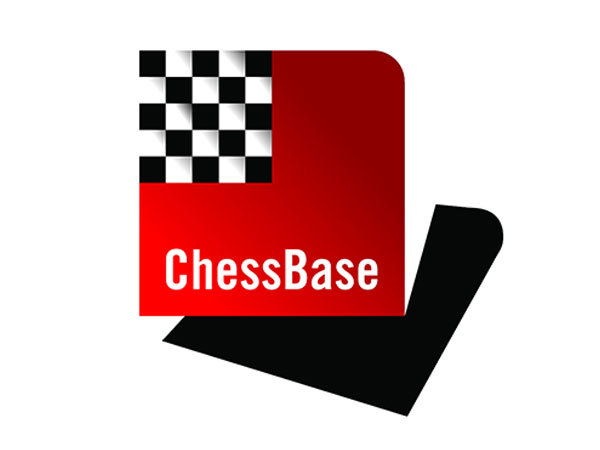


ChessBase Magazine 158 – Highlights
|

|

|
Alexey Kuzmin: "Romanishin's Principle"After 1.e4 c5 2.Nf3 d6 3.Bb5+ Bd7 4.c4 Alexey Kuzmin sees three setups for Black: A) Black takes on b5 B) The Nb8 remains there for the moment C) Black plays a quick ...Nc6 |

|
Schandorff: Caro-Kann B19 In the 1st match game in Chennai Carlsen chose 7...e6 instead of 7...Nd7 which has been played thousands of times. This leaves open for Black the option of ...c5 and then ...Nc6. The “disadvantage” is only 8.Ne5, but in what follows that also leads to simplifications, as Lars Schandorff shows. |
 |
Illingworth: Sicilian Defence B42 Here White almost always reacts with 6.Nb3 (or else 6.c3), and then there can be transitions to the Grivas Sicilian. However, there is also another (stronger) reply, as Max Illingworth impressively points out in his article. |
 |
Kuzmin: Sicilian Defence B52 1.e4 c5 2.Nf3 d6 3.Bb5+ Bd7 4.c4 Already played in the 70s by Romanishin, the move 4.c4 brings some variety into the system with 3.Bb5+. Alexey Kuzmin spots a lot of unexplored positions here, in which Black must first of all show that he is able to equalise. |
 |
Antic: French Defence C11 1.e4 e5 2.d4 d5 3.Nc3 Nf6 4.e5 Nfd7 5.f4 c5 6.Nf3 Be7 7.f4 b6 Black’s subtle move order allows him to play for the bishop exchange with ...Ba6. If White leaves his bishop on f1, however, Black loses a tempo. So in the article by Dejan Antic it is all about both sides not moving the bishop first. |
 |
Moskalenko: French Defence C18 1.e4 e6 2.d4 d5 3.Nc3 Bb4 4.e5 c5 5.a3 Ba5 The Armenian Variation 5...Ba5 has hardly been seen at the top level in recent years – and for good reason. According to Viktor Moskalenko there are, however, a few improvements for Black, which at least suffice for the employment of the variation as a surprise weapon. |
 |
Stohl: Italian Game C54 1.e4 e5 2.Nf3 Nc6 3.Bc4 Bc5 4.c3 Nf6 5.d4 exd4 6.e5 d5 7.Bb5 Ne4 8.cxd4 Bb6 9.Nc3 0-0 10.Be3 Bg4 Here the modern trend is 6.e5 (compared to 6.cxd4). According to Igor Stohl White achieves no advantage with it, but in the variation there is still space for improvements for both sides. |
 |
Krasenkow: Semi-Tarrasch D41 1.d4 d5 2.c4 e6 3.Nc3 Nf6 4.Nf3 c5 5.cxd5 Nxd5 6.e4 Nxc3 7.bxc3 cxd4 8.cxd4 The plan with an early ...c5 is still rarely seen in top games. As Michal Krasenkow demonstrates, White has good chances of an advantage in all lines, though the likelihood of a draw is still high. |
 |
Sumets: Grünfeld Defence/Schlechter Defence D94 1.d4 d5 2.c4 c6 3.Nc3 Nf6 4.e3 g6 5.Nf3 Bg7 6.Bd3/Be2 0-0 7.0-0 dxc4 8.Bxc4 Bg4 9.h3 Bxf3 10.Qxf3 Nbd7 11.Rd1 e5 White has surprisingly few opportunities to deviate from the long sequence of moves, so it is not unimportant whether he is better in the position in the diagram. Andrey Sumets considers Black’s setup to be very reliable and gives a lot of proof of this. |
 |
Gutman: Nimzoindian Defence E25 1.d4 Nf6 2.c4 e6 3.Nc3 Bb4 4.f3 d5 5.a3 Bxc3+ 6.bxc3 c5 7.cxd5 exd5 8.e3 c4 In the most discussed game of the world championship Carlsen surprised his opponent with 7...cxd5 and 8...c4. Lev Gutman analyses whether it is possible to demonstrate any advantage for White, but finds proof that Black can assert himself. |
 |
Postny: Nimzoindian Defence E39 1.d4 Nf6 2.c4 e6 3.Nc3 Bb4 4.Qc2 0-0 5.Nf3 c5 6.dxc5 Na6 7.g3 Nxc5 8.Bg2 In the position in the diagram 8... Nce4 9.0-0 Nxc3 10.bxc3 Be7 is of theoretical significance – will White’s initiative be triumphant or will it be the superior pawn structure? Evgeny Postny cannot see an advantage for White, but Black’s setup might not be to everybody’s taste. |
 |
Marin: Nimzoindian Defence E55 1.d4 Nf6 2.c4 e6 3.Nc3 Bb4 4.e3 0-0 5.Bd3 d5 6.Nf3 c5 7.0-0 dxc4 8.Bxc4 Nbd7 9.Qe2 b6 10.Rd1 cxd4 11.exd4 Bb7 12.Bd2 White’s setup can also be played against the Karpov Variation 8...cxd4 9.exd4 b6. However, according to Mihail Marin’s extensive analyses it is questionable whether White can achieve anything after 12...Rc8 13.Bd3 Bd6. |
| Advertising |